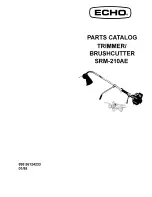
• A lower feed pressure can stop the vibration.
Otherwise replace the blade.
Diamond blades
WARNING: Never use a diamond blade to
cut plastic material. The heat produced
during cutting may melt the plastic and it can
stick to the cutting blade and cause a
kickback.
WARNING: Diamond blades become very
hot when used. An overheated blade is a
result of improper use, and may cause
deformation of the blade, resulting in
damage and injuries.
WARNING: Cutting metal may cause fire
and damage to this product or the dust
extractor.
Note: Diamond blades are available in several hardness
classes.
Note: Sharpen the blade by cutting soft material such as
sandstone or brick.
• Always use a sharp diamond blade.
• Diamond blades can become dull when the wrong
feeding pressure is used or when cutting certain
materials such as heavily reinforced concrete.
Working with a dull diamond blade causes
overheating, which can result in the diamond
segments coming loose.
• Diamond blades consist of a steel core provided with
segments that contain industrial diamonds.
• Diamond blades are ideal for masonry, reinforced
concrete and other composite materials.
• Diamond blades ensure lower costs per cutting
operation, fewer blade changes and a constant
cutting depth.
• When using diamond blade make sure that it rotates
in the direction indicated by the arrow on the blade.
Diamond blades for dry cutting
• During cutting the friction in the cut causes the
diamond blade to be heated up. If the blade is
allowed to get too hot this can result in loss of blade
tensioning or core cracking.
• Although no water is required for cooling, dry cutting
blades must be cooled with air flow around the
blades. For this reason dry cutting blades are
recommended only for intermittent cutting. Every few
seconds of cutting the blade should be allowed to
run "free" with no load to allow the air flow around
the blade to dissipate the heat.
Diamond blade - side clearance
WARNING: Certain cutting situations or
poor blades can suffer excessive wear on
the side of the segments. Make sure the
diamond segment (T1) is wider than the
blade (T2). This is to prevent pinching in the
cutting slot and kickback. Refer to
Kickback
on page 10
.
T1
T2
CAUTION: Some cutting situations and
worn blades may cause increased wear on
the side of the segments. Replace the blade
before it is worn out.
To examine the spindle shaft and the
flange washers
CAUTION: Use only Husqvarna flange
washers with a minimum diameter of 60 mm
(2.36 in.).
WARNING: Incorrect flange washers can
cause the blade to be damaged or come
loose. Do not use defective, worn or dirty
14
705 - 002 - 12.11.2018
Summary of Contents for K 770 Vac
Page 101: ...705 002 12 11 2018 101 ...
Page 102: ...102 705 002 12 11 2018 ...
Page 103: ...705 002 12 11 2018 103 ...















































